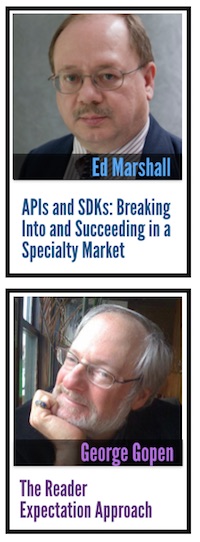Dynamic Chunking of Component-Authored Information
Thursday, October 1 — 4:00pm-4:45pm
Ben Colborn
Manager, Technical Publications
Nutanix
Owen Richter
MTS - Web Application Architect
Nutanix
In topic-based information development environments such as DITA, the perennial question is “How large should a topic be?” While the topic-oriented approach has been shown to be suitable for authoring, only two levels of presentation are common: an entire set of content as a book (which may run into hundreds of pages), or component-by-component as authored.
About
Ben Colborn is manager of technical publications at Nutanix, a Silicon Valley IT infrastructure startup. In addition to writing documentation for support engineers, partners, and customers, he is involved in implementing an intelligent content strategy in his group and in collaboration with other parts of the company. Previously he worked at Citrix Education, where he developed instructor-led training material and eLearning for Citrix virtualization technologies and also participated in implementing DITA for training.
Owen Richter is a Web Application Architect for the Customer Support Organization of Nutanix, a Silicon Valley cloud computing startup. While at Nutanix, Owen has been responsible for implementing the documentation and search functions on the Nutanix Customer Support website. Owen currently works almost exclusively as a JavaScript Programmer who also works extensively with SQL and MongoDB. In addition to documentation and search, he specializes in data analysis and visualization.












